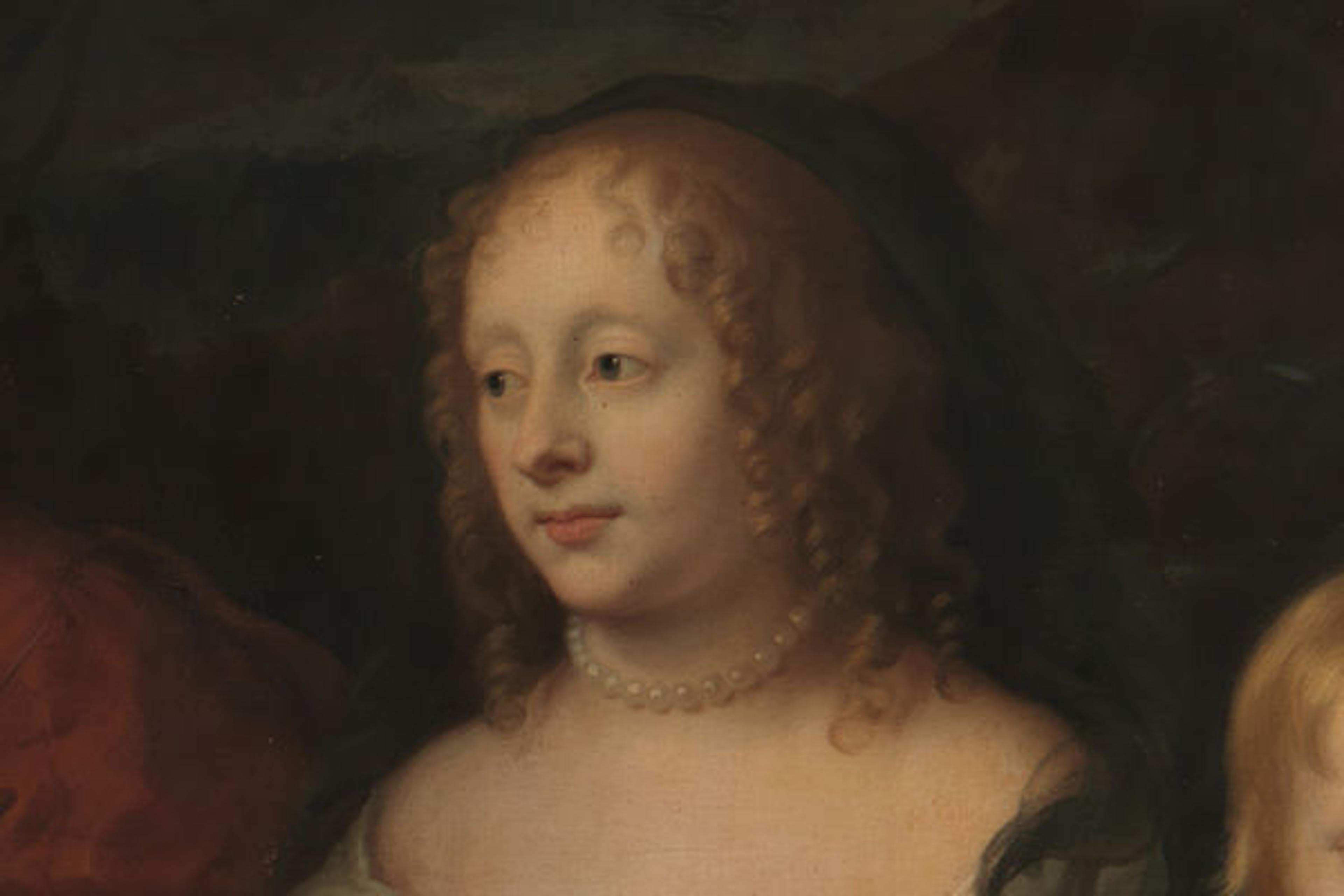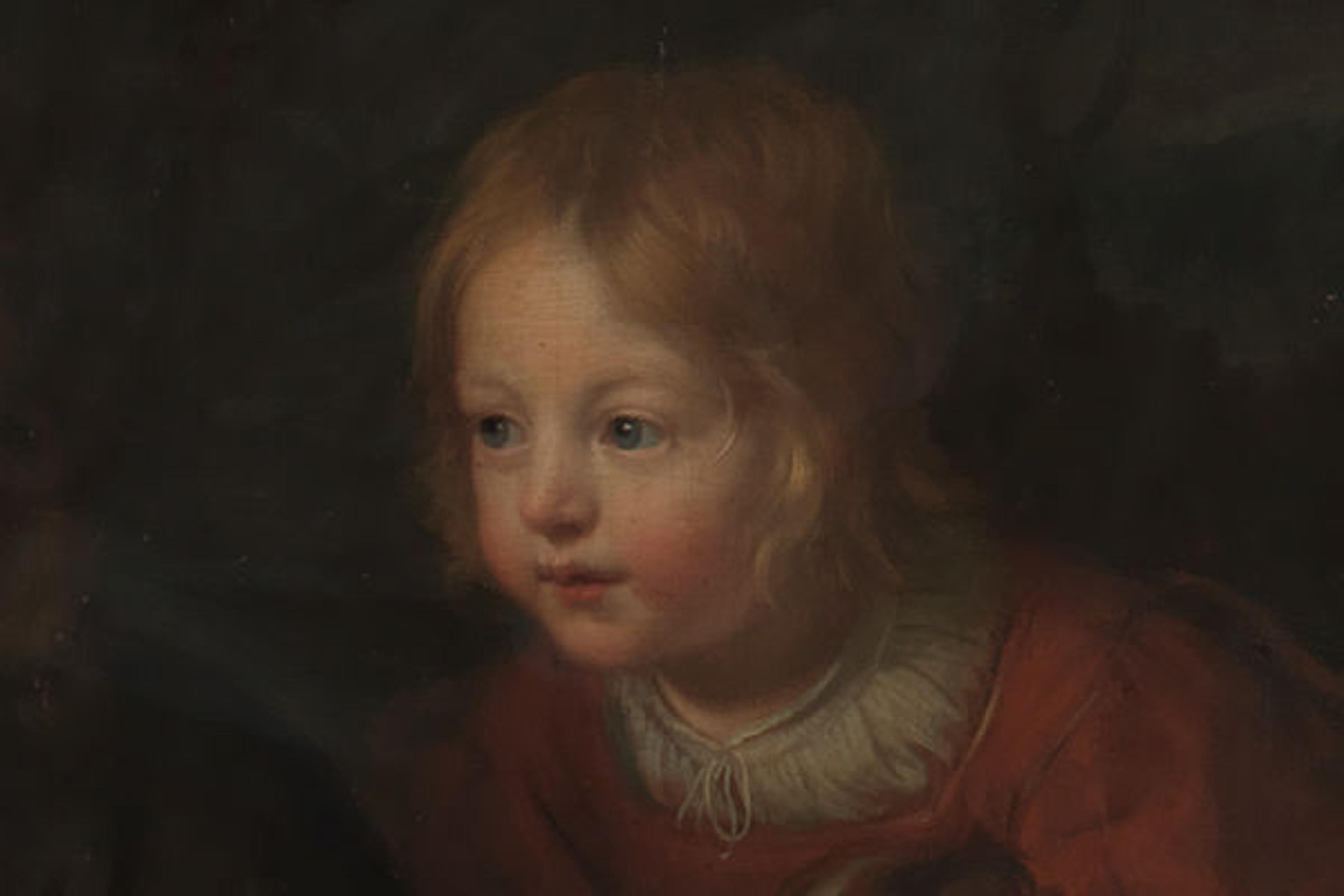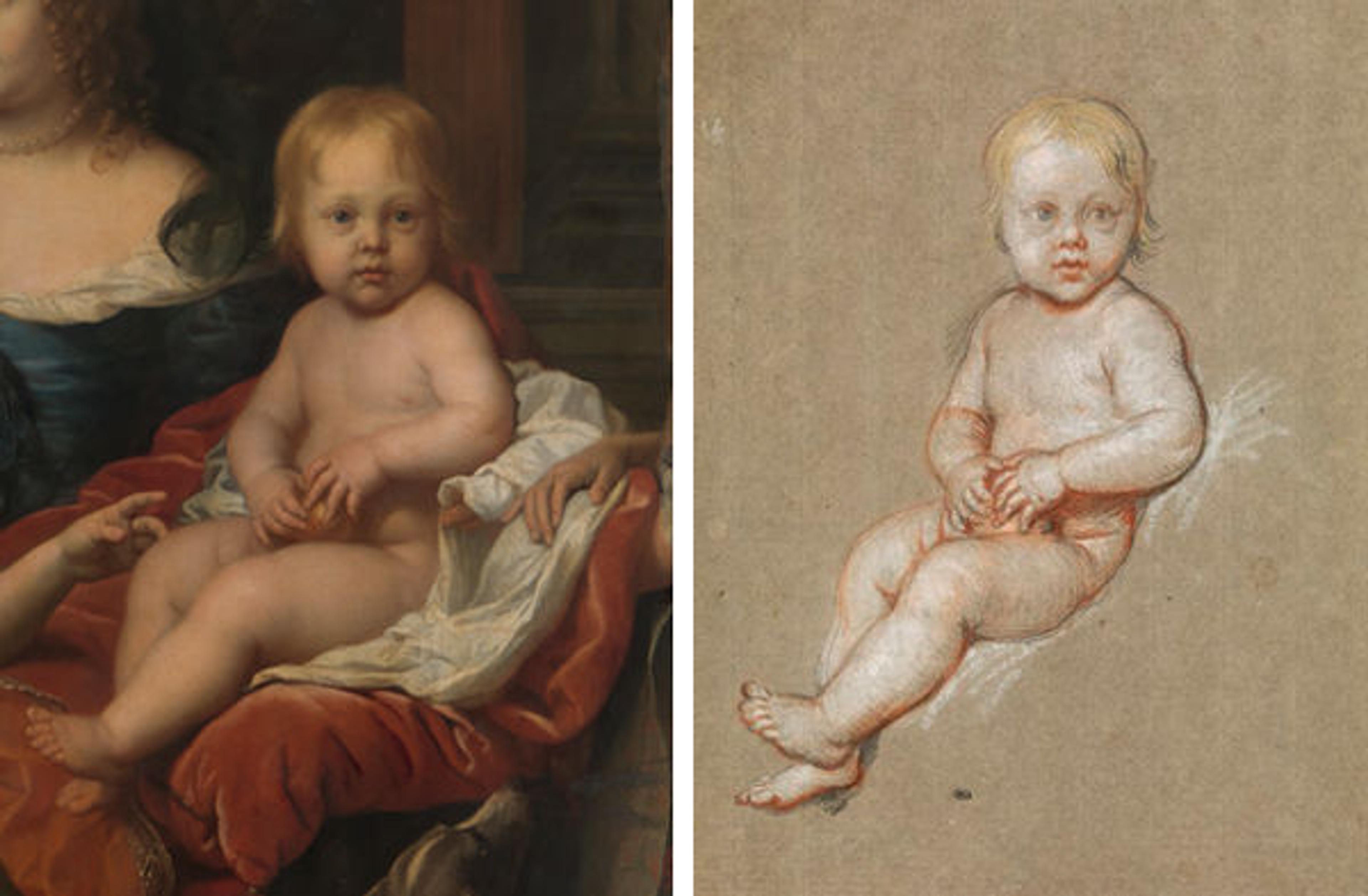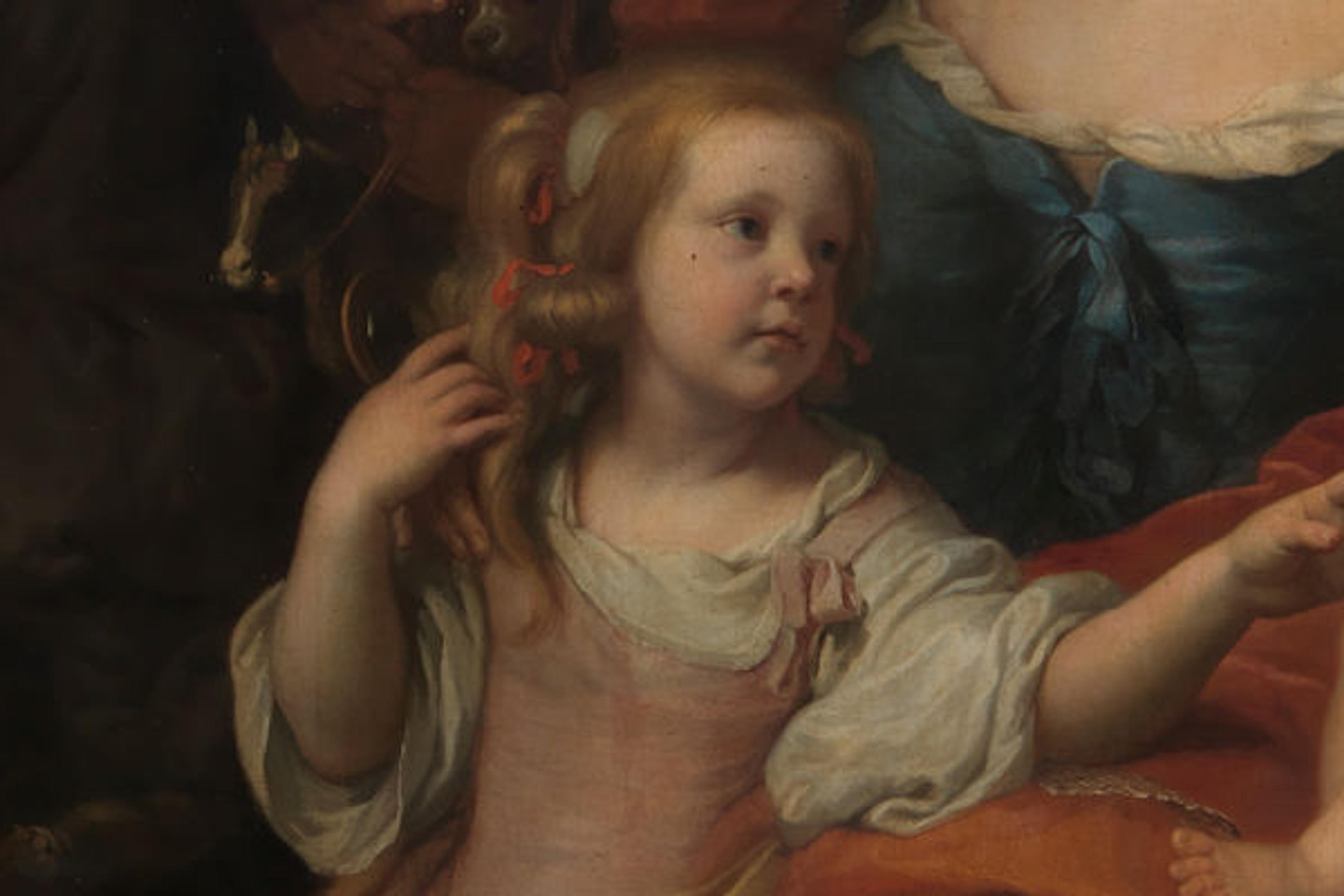Meet the Jabachs

Charles Le Brun (French, 1619–1690). Everhard Jabach (1618–1695) and His Family (before conservation), ca. 1660. Oil on canvas; 110 1/4 x 129 1/8 in. (280 x 328 cm). The Metropolitan Museum of Art, New York, Purchase, Mrs. Charles Wrightsman Gift, 2014 (2014.250)
«In the few months that have passed since the arrival of Charles Le Brun's monumental canvas depicting Everhard Jabach and his family, we've begun to get acquainted with the members of this extraordinary family, which moved from Cologne to Paris and established a life of courtly elegance.»

Detail of Jabach's wife, Anna Maria de Groote (before conservation)
Apart from the great banker and art collector who dominates the left-hand side of the composition, there is his wife, Anna Maria de Groote. She came from a family of wealthy merchants from the Flemish city of Ghent who had emigrated to Cologne in the late sixteenth century. In 1648, at the age of twenty-four, she married Everhard Jabach IV, and although they lived in Paris, she frequently returned to visit her family's home on the Glockengasse in Cologne.

Detail of Jabach's older son, Everhard V (before conservation)
The rosy-cheeked, blond boy looking over his father's shoulder, snuggling a puppy, and holding the reins of a hobby horse is Jabach's son and heir, Everhard Jr. (or Everhard V). His attention seems directed toward the golden bust of Minerva and the accumulated books and portfolios that his father seems to indicate to him. His parents must have had great expectations for him, for later, at the age of fifteen, he was portrayed as Apollo, the god of light and the arts. Apparently the boy did not share the extravagant taste for the pricey artworks his father so cherished, and when he came of age, he moved back to his native town of Cologne. Like his father, he went on to become a successful merchant and banker as well as an influential member of the city council. He probably inherited this interest in politics from the maternal side of the family: both his grandfather, Heinrich I, and uncle, Heinrich II, were important political figures—the older as a council member, the younger as the first mayor of Cologne from the de Groote family, a position later held by his sons Franz and Nikolaus.

Left: Detail of Jabach's infant son, Heinrich (before conservation). Right: Charles Le Brun (French, 1619–1690). Portrait of a Child of the Banker Jabach. Black chalk, heightened with pastel, on grey-beige paper; 40.2 x 29.5 cm. Musée du Louvre, Paris (INV 28871, recto)
Baby Heinrich—ensconced on a velvet pillow next to his mother, playing with a golden ball—was probably around eighteen months old when the portrait was painted. He was the first of the Jabach children to be born in Paris, where he was baptized in 1660. Although he is the younger of the two sons, he is clearly the center of his two sisters' attention. It's as though he is being presented to the world, and it is his presence that allows us to date the picture with some certainty. He grew up to become the director of his father's tannery in Corbeil, south of Paris. The only preparatory drawing we have for the picture is a colored chalk drawing of Heinrich now in the Louvre.

Detail of Jabach's older daughter, Anna Maria (before conservation)
The two Jabach daughters are Anna Maria (born 1650) and Hélène (born 1654). Le Brun has brilliantly captured their very different characters. Anna Maria, the oldest of Jabach's children, is quite the elegant young lady, dressed in a blue, flower-strewn silk brocade dress with a string of blue beads and a veil covering her beautifully coiffed hair; she is accompanied by her devoted whippet, who gazes at her anxiously, awaiting some indication of what he is to do. Anna Maria married Nikolaus Fourment from Cologne—probably a relative of Peter Paul Rubens's second wife, Helena Fourment—in 1675. (The de Grootes were closely connected to the Antwerp family through several marriages, and one branch of the family lived in Cologne.)

Detail of Jabach's younger daughter, Hélène (before conservation)
Anna Maria's little sister, Hélène, seems to be quite another matter. Leaning against her mother's knee with childish nonchalance, she has an impish expression. Her hair has come loose and the pink ribbons untied. She gazes fondly at her baby brother, turning away from the little convex mirror she holds in her right hand, while her mother gently grasps her shoulder. Unlike her older sister, Hélène never married, and she lived in Paris for the rest of her life.
None of Jabach's children seems to have shared their father's love for the fine arts, and what remained of his impressive collection after the massive sales to the French crown was divided after his death in 1695. Although Jabach's older son, Everhard Jr., was not interested in collecting, he did not sell the family portrait, transferring it to his home in Cologne on the Sternengasse, where it remained and was admired until 1791. Much of its fascination is due to the artist's ability to capture the personalities of his sitters, balancing an effect of intimacy with a quality of formal grandeur. His special relationship with Jabach is evident in the way he was permitted to paint himself into the work, reflected in a mirror, working on a canvas. Le Brun's presence is a testament to the mutual affection of painter and sitter, and it makes this one of the most personal paintings he ever created.
Christine Seidel
Christine Seidel was the 2013–2014 Slifka Foundation Interdisciplinary Fellow in the Department of European Paintings. She was awarded the fellowship to conduct research for the Museum's collection catalogues of early Netherlandish and French paintings.